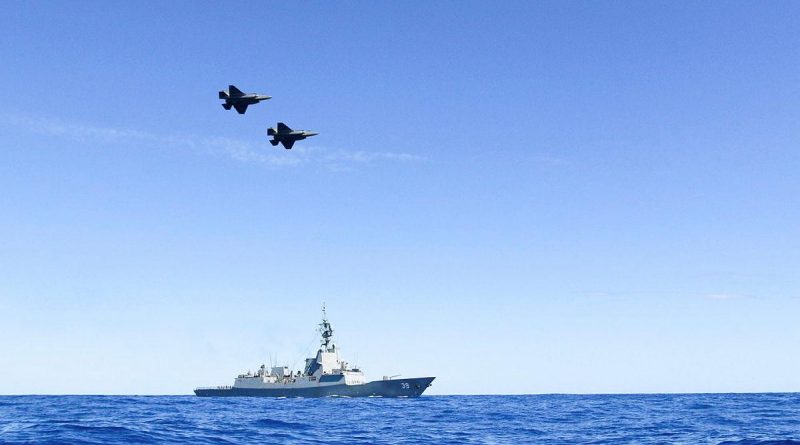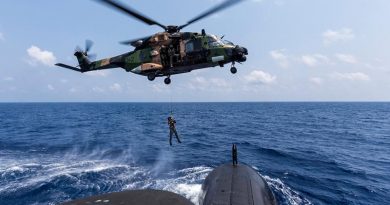Australian defence-industry reps disappointed with DSR
Share the post "Australian defence-industry reps disappointed with DSR"

Australia’s peak industry body representing small and medium defence-industry companies – Australian Industry and Defence Network (AIDN) – says it is concerned about an apparent emphasis on speed over sovereignty in today’s Defence Strategic Review.
Download the public version of the Defence Strategic Review here.
CONTACT’s key extracts from the Defence Strategic Review
A spokesperson for AIDN said the representative body welcomed the release of the review and acknowledged the hard work of Dr Stephen Smith and Sir Angus Houston – but, go on to say that references to sovereign defence industry appeared cursory at best in the report.
“AIDN is calling for the Albanese Government and the Department of Defence to work closely with the 61,000+ workers employed by Australian defence industry to ensure that a comprehensive policy-and-procurement framework are put in place to achieve this intent,” the spokesperson said.
“However, the DSR does not affirm this position.
“The references to defence industry [in the DSR] appear cursory at best.
“Of concern is the statement that Australian industry content and domestic production should be balanced against timely capability acquisition.
“The Albanese Government needs to clearly articulate what they believe ‘timely acquisition’ is – and it needs to articulate what the industrial plan for Australian industry is to be.
“AIDN can accept that the requirement for a capability may mean Defence proceeds offshore to purchase that capability, but, there must be a plan to ensure that the ability to produce the capability locally is developed at the same time – and it must be mandatory.
“Without the proper guidance from government, Defence will be able to use the argument of speed to capability to avoid the use of Australian industry.
“The future of Australian defence industry depends on a framework where their role in delivering capability requirements is clear, and the procurement process is efficient and accessible to local industry, especially SMEs.
“Allowing internationally owned large Defence contractors the ability to provide advice to Defence on ‘speed to capability’ without due regard or requirement for work to be transferred to Australian industry, means that the these overseas companies will simply use the ‘speed to capability’ mantra to employ their existing overseas supply chains – and thus there will be no development, enhancement or creation of an Australian indigenous sovereign industrial capability, a capability our nation requires in order to achieve national strategic resilience.”
AIDN said the creation of Australian capability would allow us as a nation to be independent, sovereign and resilient, and could and should provide a secondary manufacturing and supply capability for our strategic partners.
“If Australia is to achieve a truly sovereign industrial base, then Australian defence industry must be designed into every aspect of these programs.
“If the intent is simply to acquire capability from foreign-owned industries, then our nation will have fallen short of what we need to create with our own industry.
“Australian industry is simply too important to be left to the whims of foreign-owned multinationals.
“AIDN would argue that now is the time for our government to mandate requirements into all of these programs so that foreign entities understand what they must do in order to secure these opportunities.
“This is not an isolated requirement – most nations have exacting requirements for the inclusion of local defence industry into their programs.”
.
.

.
.
Share the post "Australian defence-industry reps disappointed with DSR"






Interestingly this also applies in the cyber domain; developing tech capabilities within Australia as opposed to offshoring is very important to National security.
I Feel Something very odd and missing.!
If we have such a dire situation in the region, and we are serious about defence.
And holding our adversary to risk.
We have 8 frigates with 16 vls each
And only 3 AWD destroyers our best capability !
I can’t fathom why we wouldn’t have at the announcement of AKUUS ordered at least 3 additional Hobart Class Destroyers we would then be at a position to cut steel and have a ship in the water by 2025 and all three by latest 2028 and we are not even contemplating additional destroyers it would seem ,,we have missed the boat.
we arn’t even on the pier.withThe USA’s near pier!
now we delay the inevitable waiting for an ex USN Admiral to tell us we need more surface combatants to be in the water while we wait for 2030 for some first of frigates and the first sub.
the chances are we will useing anzacs frigates when conflict occures .
God help those brave sailors!!
That’s how I see it. Why didn’t we keep producing AWDs and even consider altering the design for other tasks. Only 16 VLS cells per frigate is very undercooked and sitting ducks to a salvo from PLA navy destroyer with 96 VLS. The LHDs are defended by three phalanx CIWS when other navies use SeaRAM. Collins subs are already old and never that good. It’s a perfect storm of 20 years of poor defence procurement interfered with by one government after the other using procurement money to pork barrel marginal seats.
Why does Australia need a retired US Admiral to revamp our Navy. Highlights the lack of confidence in our Defence hierarchy.